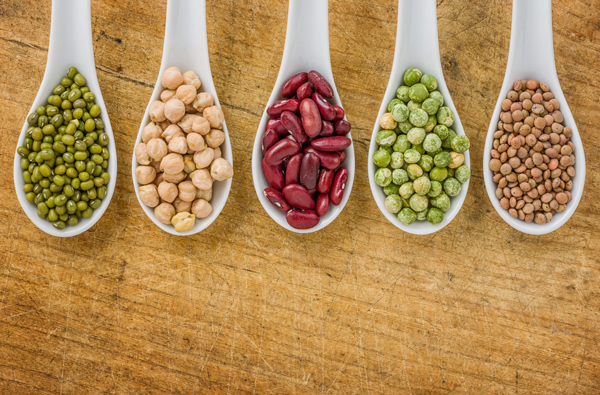
Upcoming Generation Not at Home in the Home Kitchen
31 October 2022How can a generation that does not cook navigate the obesity epidemic?
By Lisa Parrish, GMC Editor
Feedback & comments: This email address is being protected from spambots. You need JavaScript enabled to view it.
Americans don’t cook at home like they used to. Many people simply do not know how to cook. One survey said only 36 percent of Americans cook daily and only 13.7 percent have a strong passion for cooking. The pandemic did briefly change cooking-at-home tendencies. However, the dollars spent on food purchased away from home are now above pre-pandemic levels.
Chef Barabra Kamp, MS, RDN, Program Director of the Culinary Medicine Specialist Board, is concerned about the impact of eating out on community health.
According to Kamp, urban Millennials eat outside the home more than 65 percent each week. She attended the Food and Nutrition Conference and Expo and heard a study that explained the generation’s eating habits: “Millennials report preparing about three dinner meals per week, which means four are comprised of food away from home. They also report breakfast (i.e. coffee) is not made at home and lunch is primarily food away from home. Therefore, weekday breakfast and lunch meals equal 10 meals away from home, and then add the four dinners out making 14 meals eaten away from home each week.”
Commercial chefs part of the problem or solution?
With nearly 32 percent of Americans obese and one in three Americans overweight, why aren’t chefs cooking healthier? According to Kamp, cooking has become routine and chefs are doing it “that way just because it’s always been done.” Routines do become habits that become hard to break over time.
Kamp also notes a hesitancy among chefs to cook healthier because of a belief that consumers will not eat food they perceive only as healthy. She recalled the example of the American Heart Association’s Heart-Check Food Certification Program that began in 1995 and attempted to give consumers an easy and reliable way of determining if menu items were heart-healthy. There was an 8-week promotional campaign aimed at increasing the sale of heart-healthy foods marked with the heart insignia. Studies determined the campaign did not have a statistically significant impact on the sale of healthy menu items. Additionally, 38 percent of chefs believe low consumer demand was the greatest barrier to including reduced-calorie items on the menu.
Create healthy delicious meals and consumers will come
Kamp believes in meeting consumers where they are and providing them with delicious and healthy meal options, without the fanfare of being labeled “healthy.”
 She suggests adding more plant-forward dishes and plant-based ingredients to popular dishes. “We can do simple things that will make a huge impact,” she said.
She suggests adding more plant-forward dishes and plant-based ingredients to popular dishes. “We can do simple things that will make a huge impact,” she said.
She gave the example of using white beans to make a soup creamy instead of cream. “White beans thicken beautifully and are inexpensive,” she said. “Then, chefs can finish the dish with a small amount of cream at the end.”
Kamp also suggested using in-season vegetables that are locally grown to lower food costs and increase the nutritional value of a dish. “For example, I wouldn’t use a beefsteak tomato on a capris salad in Boston in the winter,” she said.
Legumes are a great substitute for animal protein. “There are many varieties that have different functions. Chefs need to know how to substitute the legume as it might not be one-for-one,” she explained.
Another chef, James Cross, CEC, Project Specialist in Nutritional Services for Corewell Health West, agrees that updating recipes to reduce fat, sugar and calories can still have the benefit of being delicious and healthy. Corewell Health West is currently updating their room service menu for half of the 22 hospitals under the Corewell umbrella. The new menu features more plant-based dishes, eliminates ultra-processed meats, cuts sugary soda offerings and inadvertently eliminates fried foods altogether by using alternate cooking methods such as air fryers or Turbochef ovens. The response has been positive from test groups of nursing, dieticians, speech and hospital leadership.
Cross also participated in a Certified Culinary Medicine Professional pilot program for foodservice professionals. During the course, the healthcare chefs were presented with nutritional information and taught how to prepare food across a diverse range of needs. He cited an example of modifying the tried-and-true taco with great flavor success and a much better updated nutritional profile through the use of homemade seasoning, whole grain products and alternative fillings.
“A regular taco has ground beef, with a high salt seasoning, full-fat cheese and usually a white flour shell. We modified it to include a whole grain corn tortilla and replaced the ground beef with options like seafood, soy-based protein or a chickpea filling. We also added more vegetables to help with color and modified the cheese to a half ounce from one ounce. It tasted better (than the original) and everyone was like, ‘Wow.’ It really changed me,” he said.
Making delicious food healthy can change both consumers’ and chefs’ minds about eating, whether it’s labeled healthy or not.
